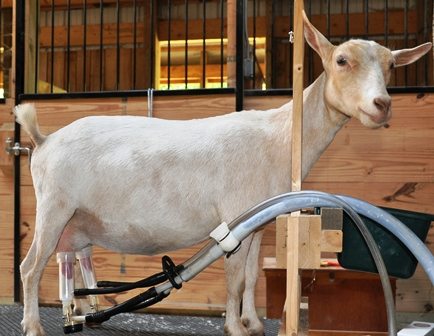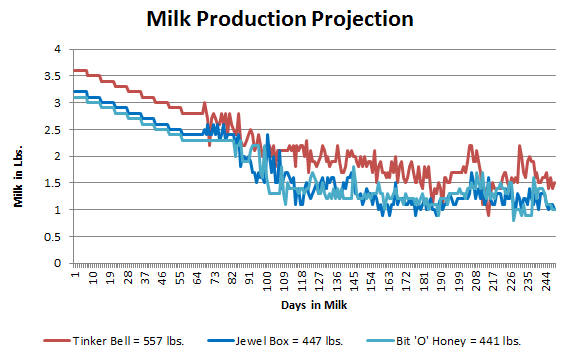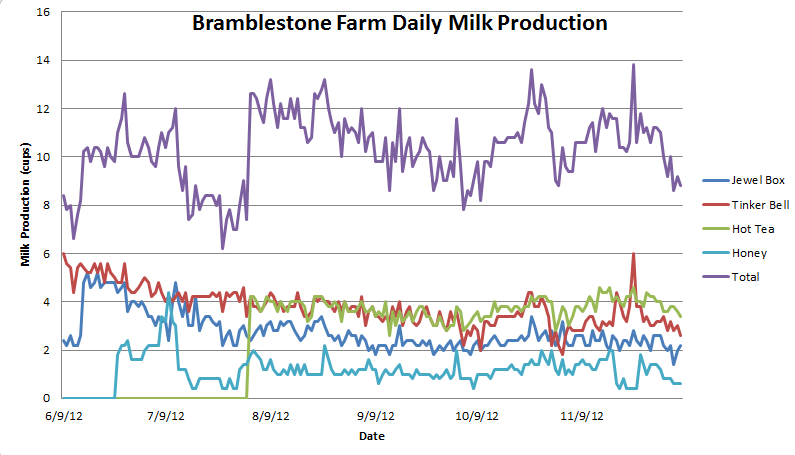
The AR star is earned by a doe when the herd goes on official DHI (Dairy Herd Improvement) milk test and the doe produces the required amount of milk. There are variations in program requirements, but basically, someone weighs and takes samples of the milk from each doe in the herd once a month, and that data is sent to the USDA. A standard lactation is considered to be 305 days, and if the doe meets the production requirements for her age in 305 days or less, then she earns her AR milk star. Both ADGA (American Dairy Goat Association) and AGS (American Goat Society) have DHI programs, and each have differing production requirements.
By looking at the milk records we collected this year, it should be possible to estimate whether any of the does have the possibility of earning their stars and make it worthwhile to go on test next year. And also, whether we should be worried about drying them off too soon.
Hot Tea earned both her AR stars in her first lactation, so we already know she’s a good milker. Tinker Bell and Jewel Box were 2.0 years old or under when they first freshened so they’d be required to produce 500 lbs. of milk (per AGS rules) or 600 lbs. of milk (per ADGA rules) while Honey was 2.02 (two years and two months) so she’d be required to produce 504 lbs. of milk (per AGS rules) or 605 lbs. of milk (per ADGA rules).
The Bramblestone Farm milk production records for this year look like this in graphical form (this is showing production in cups):
The does all raised their own kids, so we don’t have milk production records until later in their lactations. Also, Honey never did completely wean Ruby (we separated them at night but Ruby still nursed during the day) so her lactation record is about half of what it should be. Therefore, to make the data above relevant to whether the does would have earned their AR milk stars; I changed the measurement to lbs., made an educated (hopefully) guess as to approximately what their production would have been at the beginning of the lactation, and about doubled Honey’s production to obtain the projection below.

The information above is through 249 days so there would be 56 days left (305 – 249). Tinker Bell is already at 557 lbs., so it appears she’d earn her AR star in both registries – she’s already passed the 500 lb. mark for AGS and should pass the 600 lb. mark for ADGA in about 30 days. It also appears that Jewel Box and Bit ‘O’ Honey would make the AGS requirement, but not ADGA. So this indicates that it could be worthwhile to go on milk test next year, but that it’s not be a good idea to dry the does off too early; Jewel Box and Bit ‘O’ Honey may need every day on test that they can get.
If we go on test next year, the milk production requirements will be higher because the does are a year older. Tinker Bell and Honey should both be 3.00 when they freshen which requires 524 lbs. (AGS) or 630 lbs. (ADGA) whereas Jewel Box will be 2.08 which requires 516 lbs. (AGS) or 620 lbs. ADGA. Dairy goat milk production generally increases significantly in the second and third freshenings; so there’s always hope that they can all get their stars in both registries.

Leave a Reply